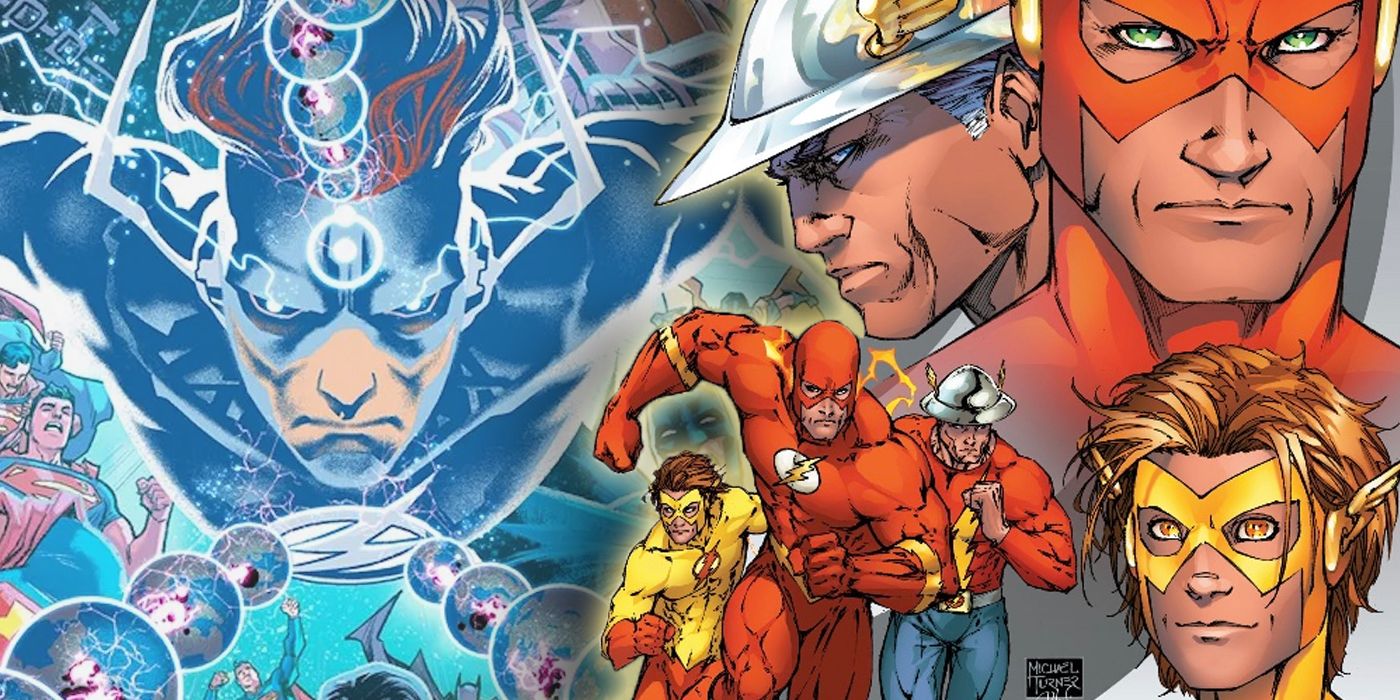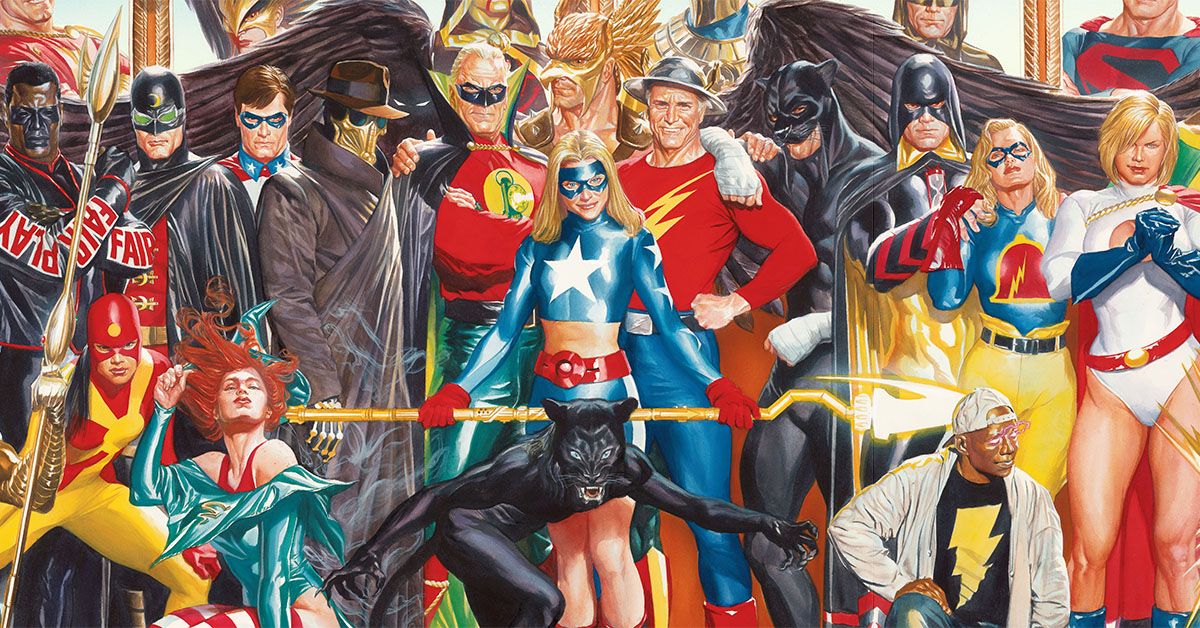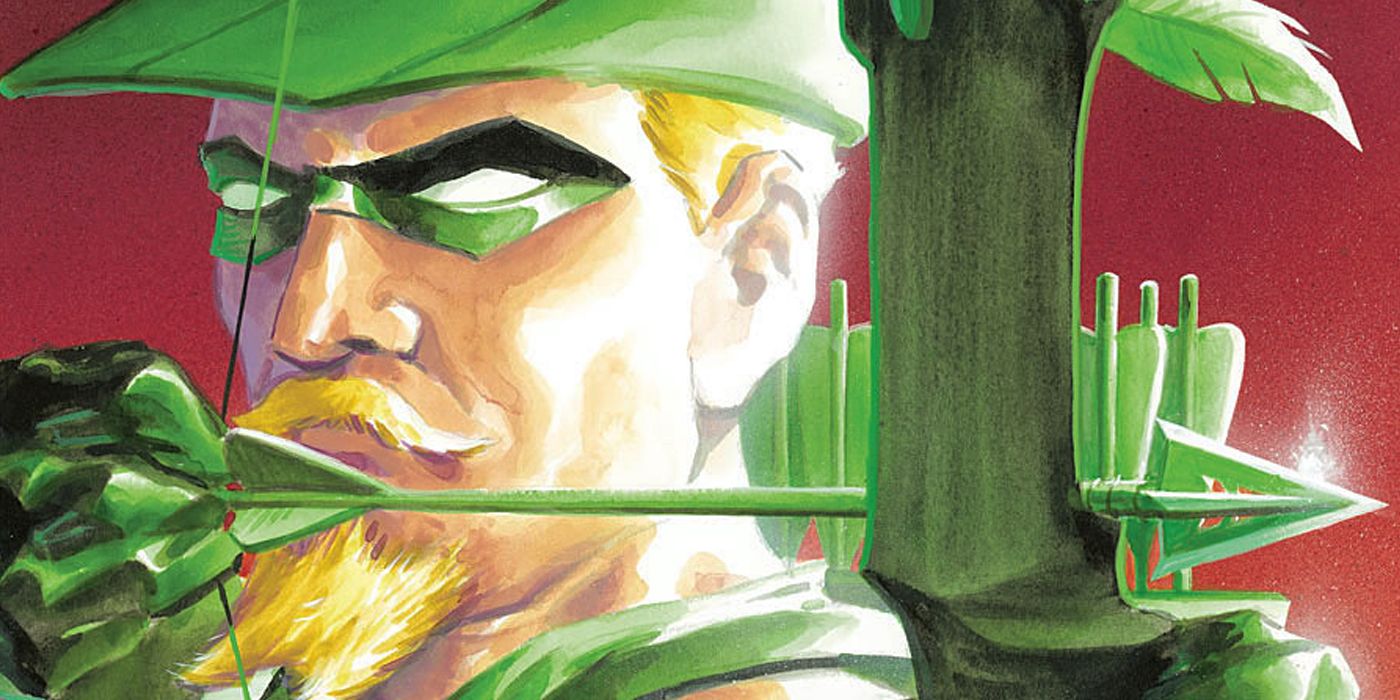Later this year, DC's Generation Zero: Gods Among Us will chart a new course for the DC Universe by picking up on elements from Doomsday Clock and Flash Forward. In the Free Comic Book Day special, Wally West will make "the ultimate sacrifice" and take on the powers of Doctor Manhattan and the Mobius Chair in order to save not only his children but the entire Multiverse.
Shortly after Generation Zero, DC will explore the new history of the DC Universe with a series of one-shots starting with Generation One: Age Of Mysteries. In the following months, DC will explore the following eras of its revised timeline through Generation Two: Age of the Metahuman, Generation Three: Age of Crisis, Generation Four: Age of Rebirth and Generation Five: Age of Tomorrow.
While DC has already brought the Justice Society and the Legion of Super-Heroes back into continuity, these new specials seem primed to bring legacy heroes, a concept that was once central to the DC Universe as a whole, back into a place of prominence.
In 1956, DC Comics revitalized the superhero genre by introducing a new Flash to the world in Showcase #4, giving birth to the Silver Age of comics. In a nod to what came before, Robert Kanigher and Carmine Infantino had the new Flash take his superhero identity from his favorite comic book hero, the Golden Age Flash. Five years later, DC would have the two Flashes meet in Flash #123, and the DC Multiverse was born. Flash was just the start of something new for comics, not just the creation of the Multiverse, but the concept of the legacy superhero. The mantles of Flash, Green Lantern, Hawkman and more Golden Age heroes were brought back with new origins and secret identities, and these reinventions paved the way for the beginning of the DC Universe as we know it today.
For decades, DC characters handed down their identities in one way or another. When being Robin no longer fit Dick Grayson's life, Jason Todd took his place as Robin. After Jason Todd was killed, Tim Drake took on the mantle. Even the Flash has been passed down multiple times since the start of the Silver Age. Barry Allen passed his Flash costume on to his one-time sidekick Wally West. Hal Jordan's Green Lantern was joined or replaced by new Lanterns like John Stewart, Guy Gardner and Kyle Rayner.
For a time, it almost seemed like DC was on track to replace all of its heroes with newer, younger characters who weren't so wrapped up in continuity. However, that all came to a halt with Green Arrow and Kevin Smith and Phil Hester's "Quiver."
After his death, Oliver Queen was replaced by his son Connor Hawke, and for a time it looked like Connor would join Wally and Kyle as the new incarnation of a classic hero. Instead, DC chose to bring back Oliver Queen in 2001's"Quiver." In the story, we learn that one of the last things Hal Jordan did as Parallax before sacrificing himself to save Earth by reigniting the sun in Final Night was to bring his friend Ollie back from the dead. While resurrection wasn't a new idea in comics, this one opened the doors for DC. Three years later, Geoff Johns would bring back Hal Jordan in Green Lantern: Rebirth, and then followed that up by bringing back Barry Allen in Flash: Rebirth, making the way for these older heroes to replace their younger counterparts.
But with Generation Zero and what comes after, DC could be setting things up to bring the legacy hero back in a major way. By reintroducing the idea of generation-based heroes, DC could be creating a path for new legacy heroes to sprout up across the DC Universe, which could prove to be a meaningful risk. In the '90s, DC's replacing Hal Jordan with Kyle Rayner led to the early online fan campaign H.E.A.T. or "Hal's Emerald Advancement Team," which advocated for Hal's reinstatement as Green Lantern.
While new legacy heroes could bring fresh blood into the DC Universe, DC could face far harsher criticism by outright replacing the major heroes of today. At any rate, DC's new focus on generations seems to indicate that legacy heroes will be coming back in a big way. Considering that we wouldn't have superhero comics as we know them today if DC hadn't embraced the legacy of the Flash by creating a new one in the '60s, similar thinking could very well be what rebuilds the DCU into something unlike any version of it we've seen before.



